This post may contain affiliate links. Please see my disclosure policy for details.
Did you know that there are many secret Anne Boleyn symbols that can be found at Hampton Court Palace?
Despite ruling for just three years during the Tudor dynasty, Anne Boleyn is one of the most famous queens in British History.
She played a major role in the English Reformation along with Henry VIII. After her fall from grace, she was executed and much of her existence was removed from the history books.
But, luckily, there are a few hidden pieces of Anne that can still be found today in King Henry VIII’s royal residence.
Here are all the Anne Boleyn symbols at Hampton Court Palace and where to find them including her initials, coat of arms, and the Boleyn Falcon!
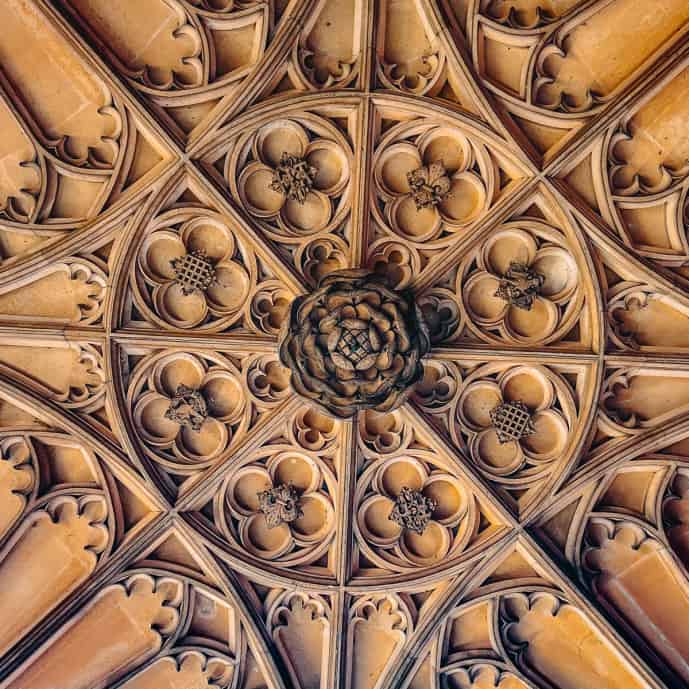
Tudor Hampton Court history
Cardinal Wolsey first started building Hampton Court in 1514. His plan was to build a grand residence to host King Henry VIII and his court but also make an impression when hosting monarchs from Europe.
Wolsey did such a great job of building this majestic palace that it later caught the attention of King Henry VIII who took it over and made it his official royal residence.
It was a palace fitted with apartments for the King and Queen but also rooms for English courtiers and nobles.
The palace boasted a Great Hall where he could host lavish banquets, galleries of fine art from painters like Holbein, a theatre for entertainment, and sweeping Tudor gardens.
During his reign, Henry VIII lived with all six of his wives at Hampton Court Palace. It is a house of the happiest memories but also the saddest woes.
His wife Jane Seymour died at Hampton Court after giving him a son and also Catherine Howard was arrested here and later executed for adultery and high treason. It is said her ghost still haunts these halls!
After Henry VIII’s death, his children Edward VI, Mary I, and Elizabeth I continued to use Hampton Court as a royal residence.
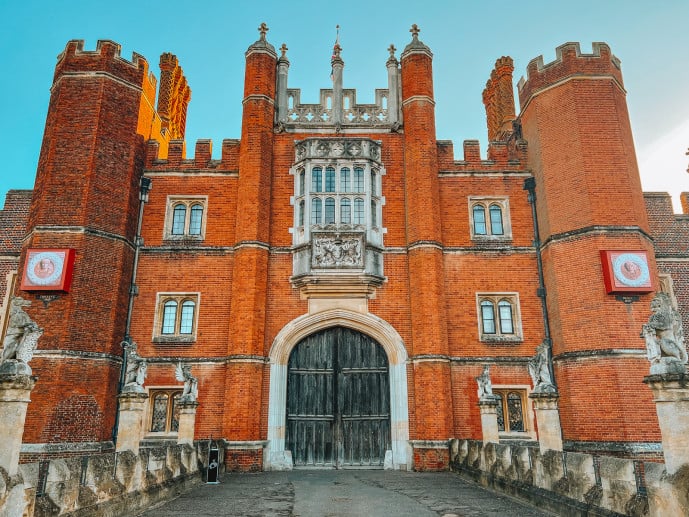
Who was Anne Boleyn?
Anne Boleyn is one of the most famous queens in British history and an extremely controversial figure as the second wife of King Henry VIII. She played a significant role in the English Reformation.
Her exact birthdate is unknown but she was the child of Sir Thomas Boleyn and Elizabeth Howard and spent most of her youth at Hever Castle. She also lived at the French Court as a companion of Henry VIII’s sister, Mary.
On her return to English Court, Anne was very popular. She wasn’t ‘traditionally’ beautiful by Tudor standards but she oozed charisma and turned many heads with her lavish French fashions.
Anne Boleyn caught Henry VIII’s attention in 1522 during a court masque where she played ‘Perseverance’. It is said he was instantly besotted with her.
Anne had many admirers including the poet Thomas Wyatt and Henry Percy, the Earl of Northumberland. She was supposedly in love with Percy and the two of them were to be engaged.
But, this made Henry VIII all the more lovestruck by her and he callously broke off Anne’s engagement to Percy.

King Henry VIII and Anne Boleyn
The courtship of Henry VIII and Anne Boleyn would take place over the course of five years.
King Henry originally courted Anne to become his mistress but she refused his offers holding out for marriage.
“I Promise…to take you as my sole mistress, casting off all others than yourself out of mind and affection, and to serve you only” – Henry VIII
Henry and Anne both exchanged gifts and Henry wrote a series of 17 letters to profess his love for her (he even drew love hearts around her initials!).
“Mine own sweetheart…wishing myself (especially an evening) in my sweetheart’s arms, whose pretty dukkys I trust shortly to kiss” – King Henry VIII
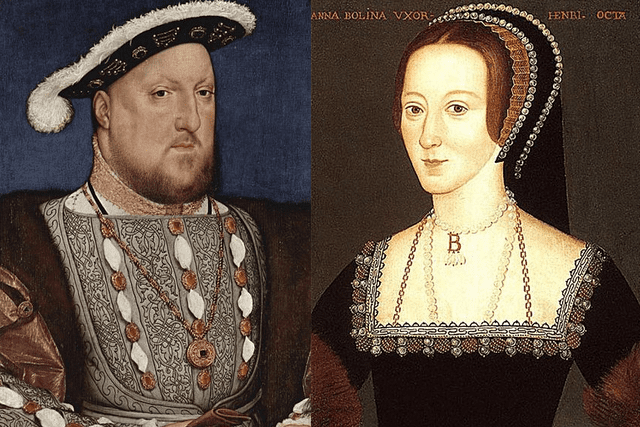
Catherine of Aragorn, Henry’s first wife, had still not produced a male heir. So, he eventually grew desperate.
He wanted to marry Anne but the Catholic Church and the Pope would not grant him a divorce as it was simply not done.
Henry started looking for alternatives and found a solution in William Tyndale’s ‘Obedience of a Christian Man’. It argued that supreme authority was from the bible and not the Pope.
Eventually, Henry broke away from the Roman Catholic Church to become the Supreme Head of the Church of England and annulled his marriage to Catherine.
He married Anne in January 1533 while he was still technically married to his first wife. Anne was later crowned Queen at Westminster Abbey six months later.

Anne’s fall from grace
Anne and Henry were married for just three years until Anne’s eventual fall from grace.
During this time, Anne would give birth to a daughter who would eventually become Queen Elizabeth I. Much to Henry’s dismay, she produced no further male heirs and miscarried three times.
Henry grew impatient and again started to look elsewhere for another wife. He set his sights on Jane Seymour and fell in love with her.
He needed a way to end his marriage to Anne and so he ordered Thomas Cromwell to have her investigated.
She was accused of adultery with five men, including her own brother and was sent to the Tower of London via the Traitor’s Gate.
Anne suffered a sham trial that found her guilty of five counts of adultery and high treason.
She was held prisoner at the Tower of London until her execution by the sword in 1536. All five men she was accused of having an affair with were also killed.
Henry VIII married Jane Seymour just 11 days later. He converted many of the ‘H A’ initials at Hampton Court into ‘H J’ for Jane.

How to find Anne Boleyn at Hampton Court Palace
Anne Boleyn would have visited Hampton Court Palace many times during her courtship, love affair and marriage to Henry VIII.
While Henry and Anne were courting, Anne became a lady in waiting for Catherine of Aragorn.
After her marriage to Henry, Anne moved into the Queen’s apartments. They both made many changes to the palace to celebrate their love by installing both of their initials everywhere.
Anne and Henry made an urgent project of Hampton Court’s Great Hall. Henry had workers building by candlelight for weeks!
Many people still supported Catherine and so having the symbol of Henry and Anne’s initials entwined sent a message of their claim to the throne.
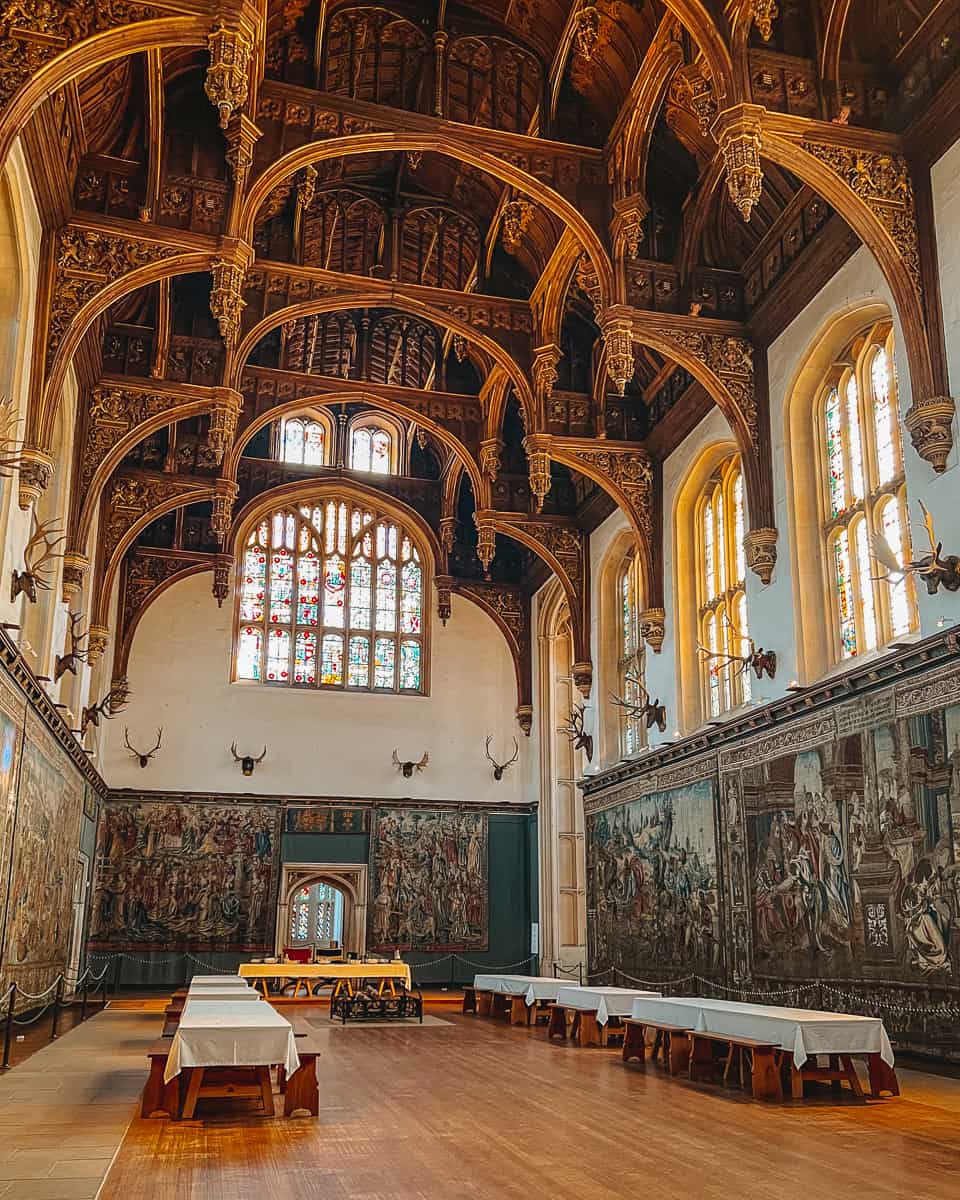
There were many instances of the Boleyn coat of arms found at Hampton Court, her motto ‘The Most Happy’, and statues and carvings of the Boleyn falcon.
But, after Anne’s downfall, Henry VIII wanted all evidence of Anne removed and her very existence to be scratched off the face of the Earth.
She was essentially written out of the history books and her name was literally chiselled off the walls in place of Jane Seymour’s.
Fortunately, not every piece of Anne was removed. If you look closely in Hampton Court Palace there are some rare symbols of Anne Boleyn that have been left untouched!
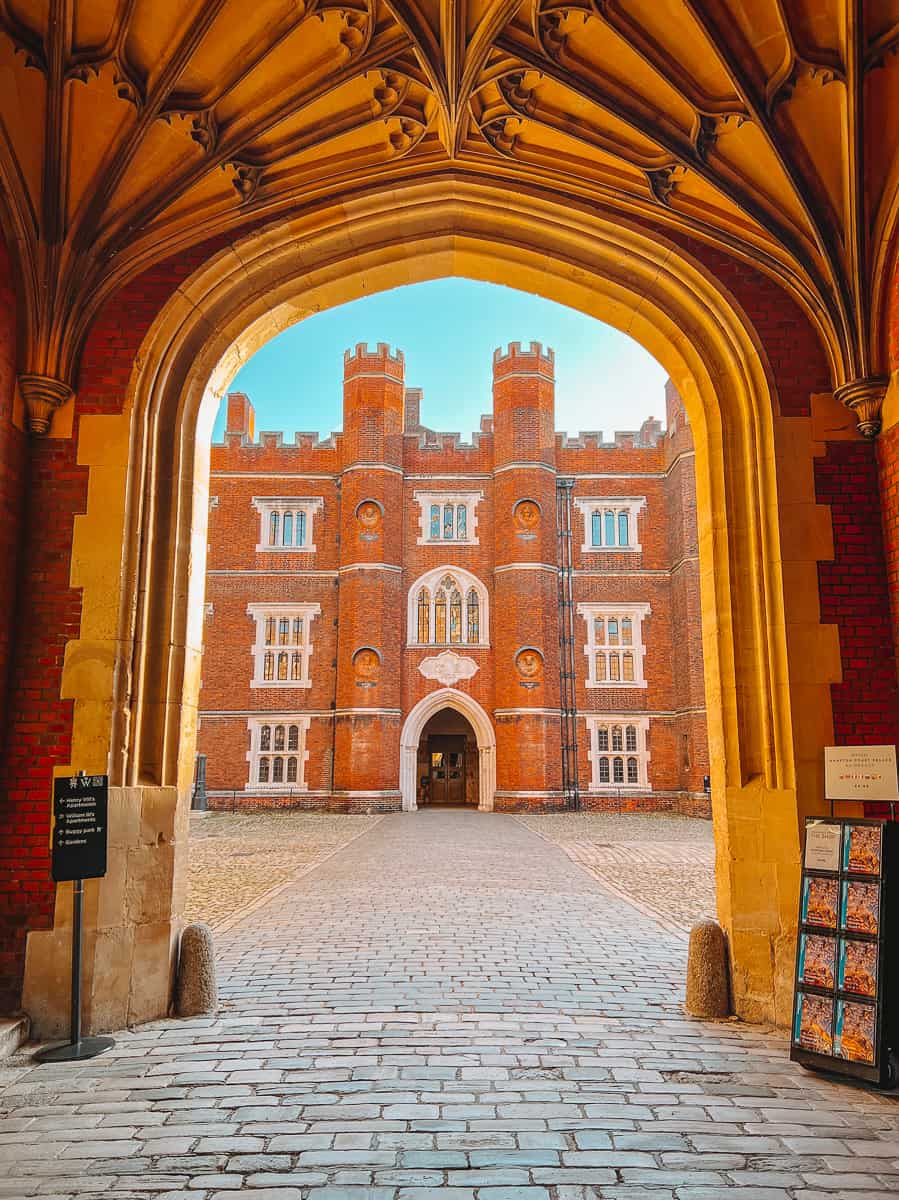
Anne Boleyn Symbols, Initials, and Coat of Arms
Whether these Anne Boleyn symbols were left behind by her secret supporters, as a reminder to not betray the king, or just simply forgotten about – you can still find pieces of Anne at the palace today.
Here are all the Anne Boleyn Symbols at Hampton Court Palace and how to find them.
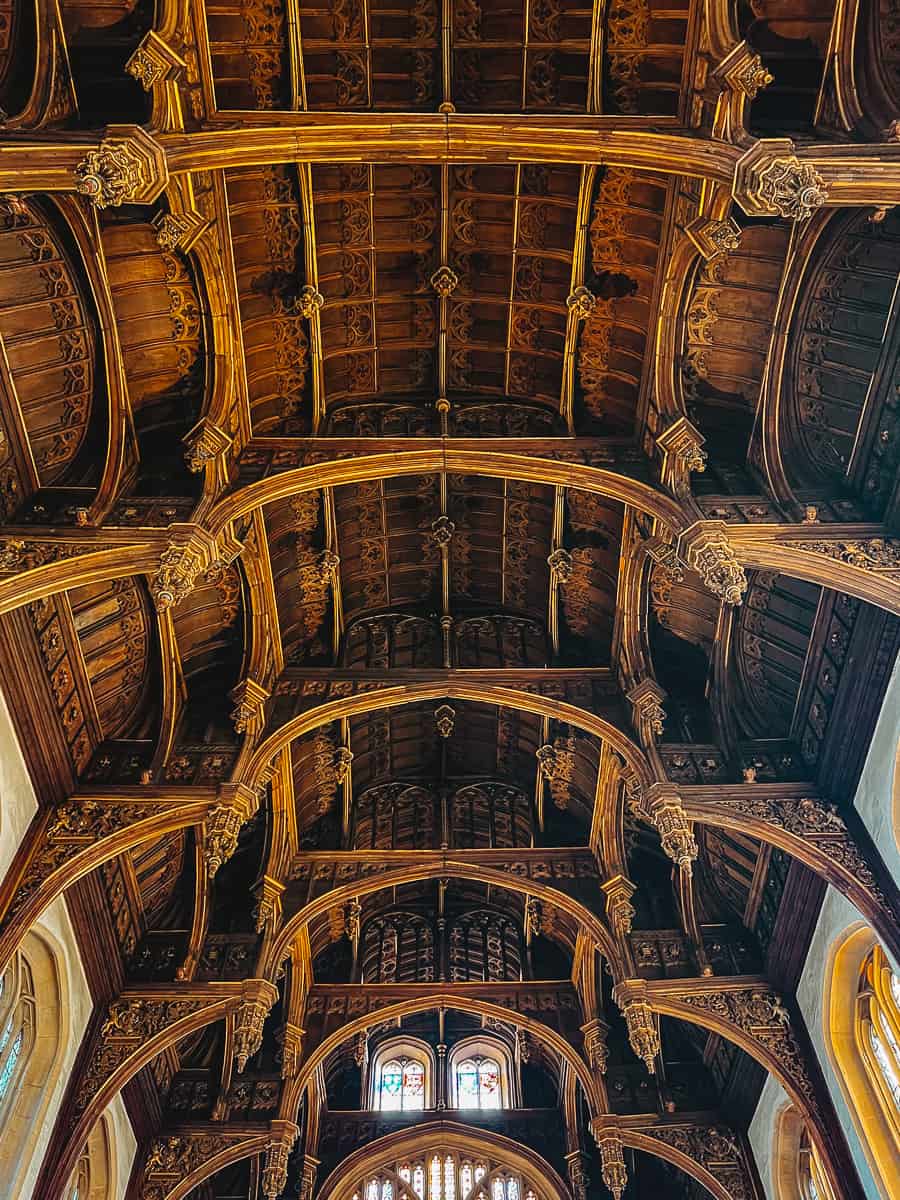
1. Anne Boleyn’s Gateway
When you enter Hampton Court Palace head straight and you’ll be wandering through the 16th-century courtyard. Note the Tudor wine fountain!
If you head forwards toward the first tower, this is called Anne Boleyn’s Gateway.
It functions as the entrance to King Henry VIII’s apartments and leads to Clock Court where you can see the Astronomical Clock above the arch.

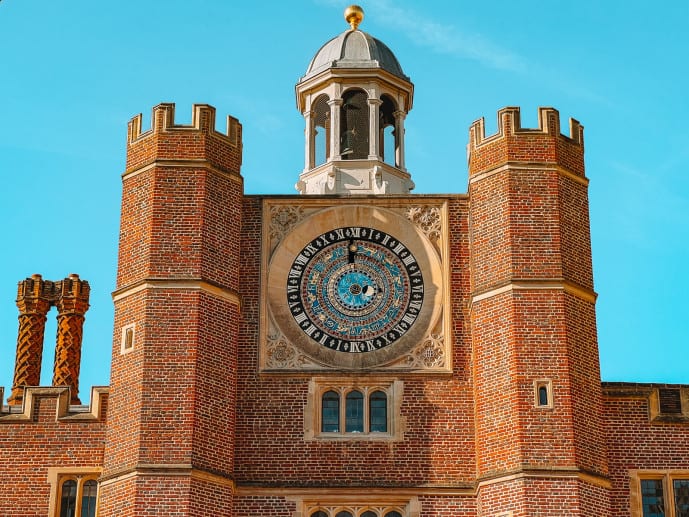
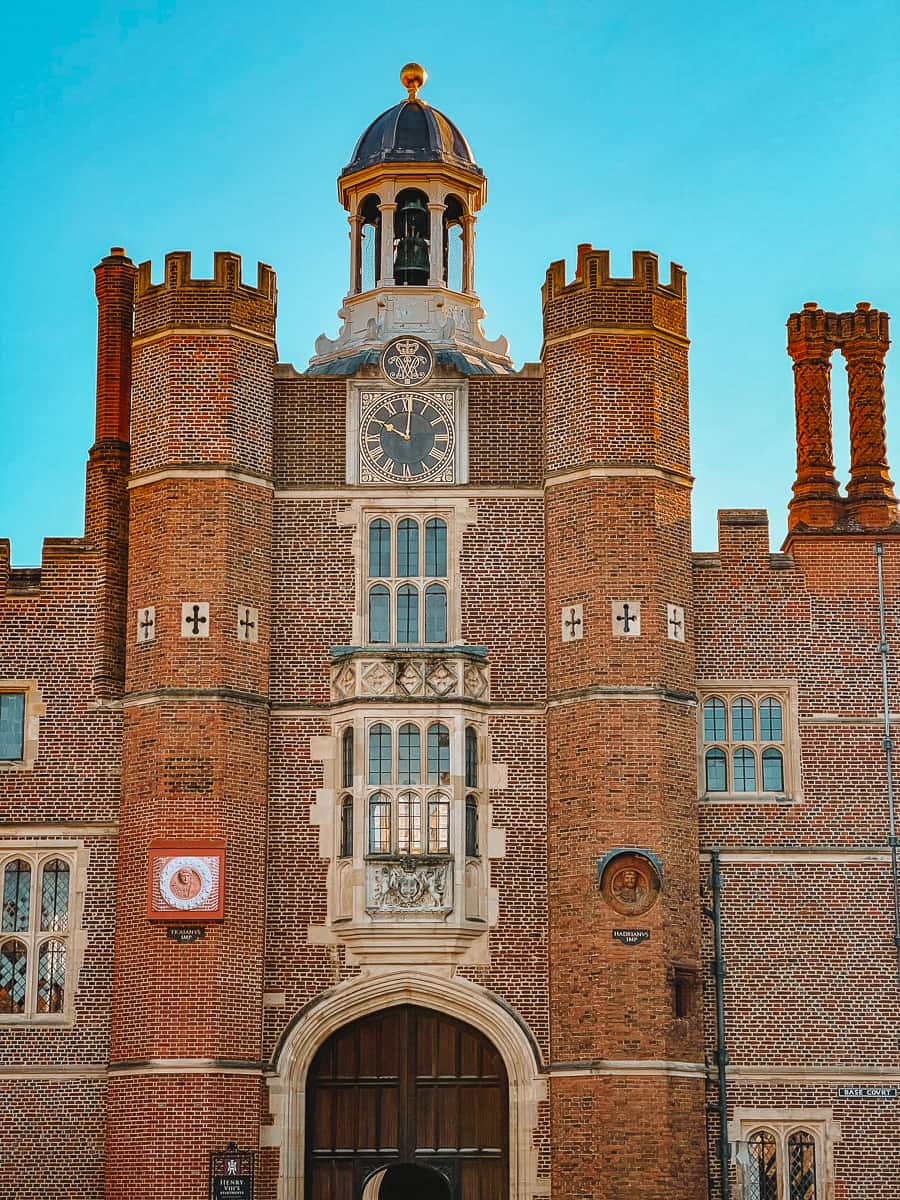
2. The Tudor rose motif underneath Anne Boleyn’s Gateway
If you head under Anne Boleyn’s Gateway and look directly upwards under the archway, you’ll find a Tudor Rose motif carved into the stonework.
Around the Tudor Rose, there are circles where you can see the initials ‘H A’ meaning Henry and Anne, and also ‘A H’ that is linked with a lovers knot.
You’ll also notice a carving of the signature Boleyn Falcon wearing an imperial crown. There is Fleur-de-lis as well which reflects Henry’s claim to France and Anne’s connection to the French Court.


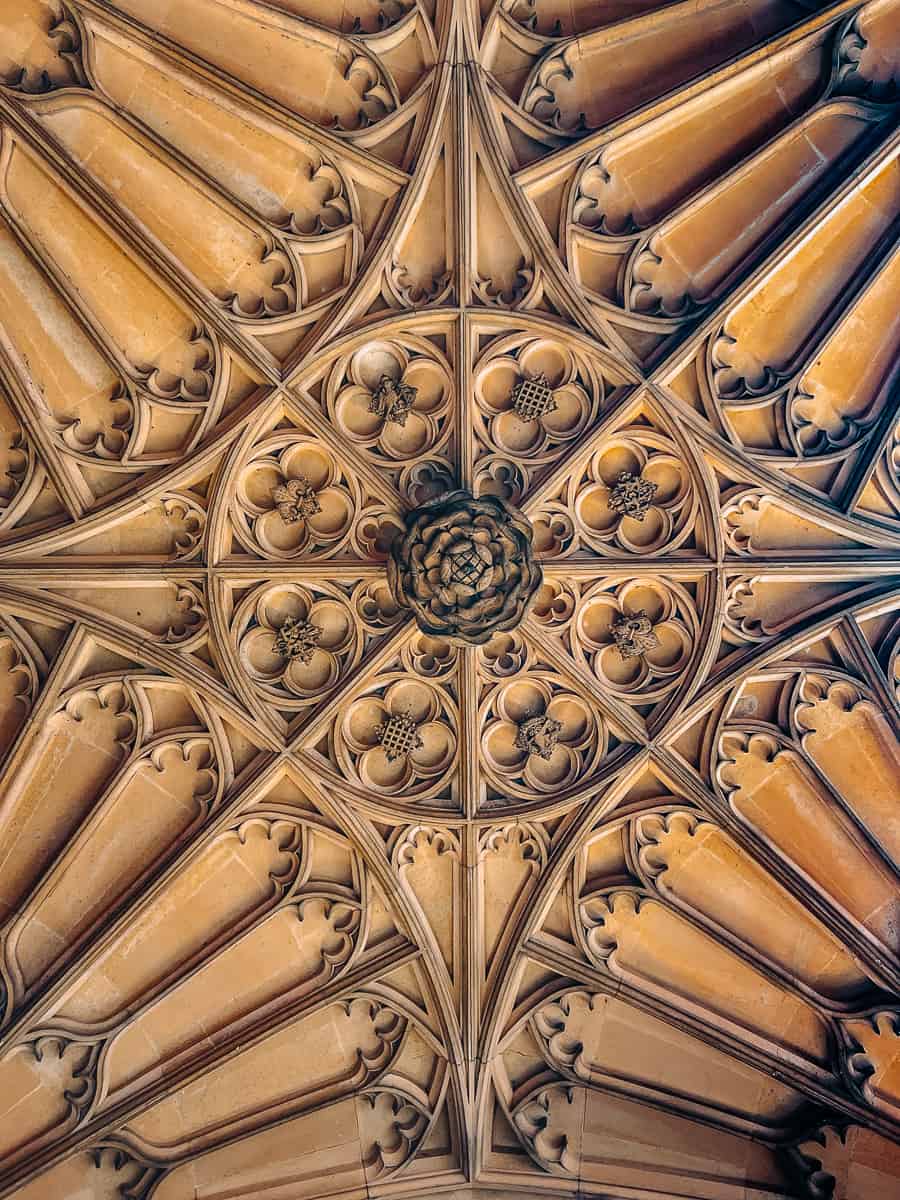
3. H A Initials in the Great Hall
The Great Hall at Hampton Court Palace is one of the most impressive rooms in the building and it will take your breath away! It is a Victorian restoration but it looks exactly like it would during King Henry VIII’s reign.
It has a hammerbeam ceiling, stained glass windows, and is draped with Abraham tapestries. It has been set up for a Tudor banquet and you’ll even see grand chairs for the King and Queen at the back.
As soon as you enter the Great Hall from Anne Boleyn’s Gateway, make a sharp left turn and you’ll find the ‘H A’ initials at the very top of the wooden screen panel along the back wall.
It’s very dark inside the hall so this one can be hard to locate! If you struggle, ask a staff member to guide you and they can shine a light on it for you.
The easiest way to locate it is to find the display cabinet with Anne’s story, her portrait, and a stone Boleyn falcon. The ‘H A’ is just above this on top of one of the carved panels!

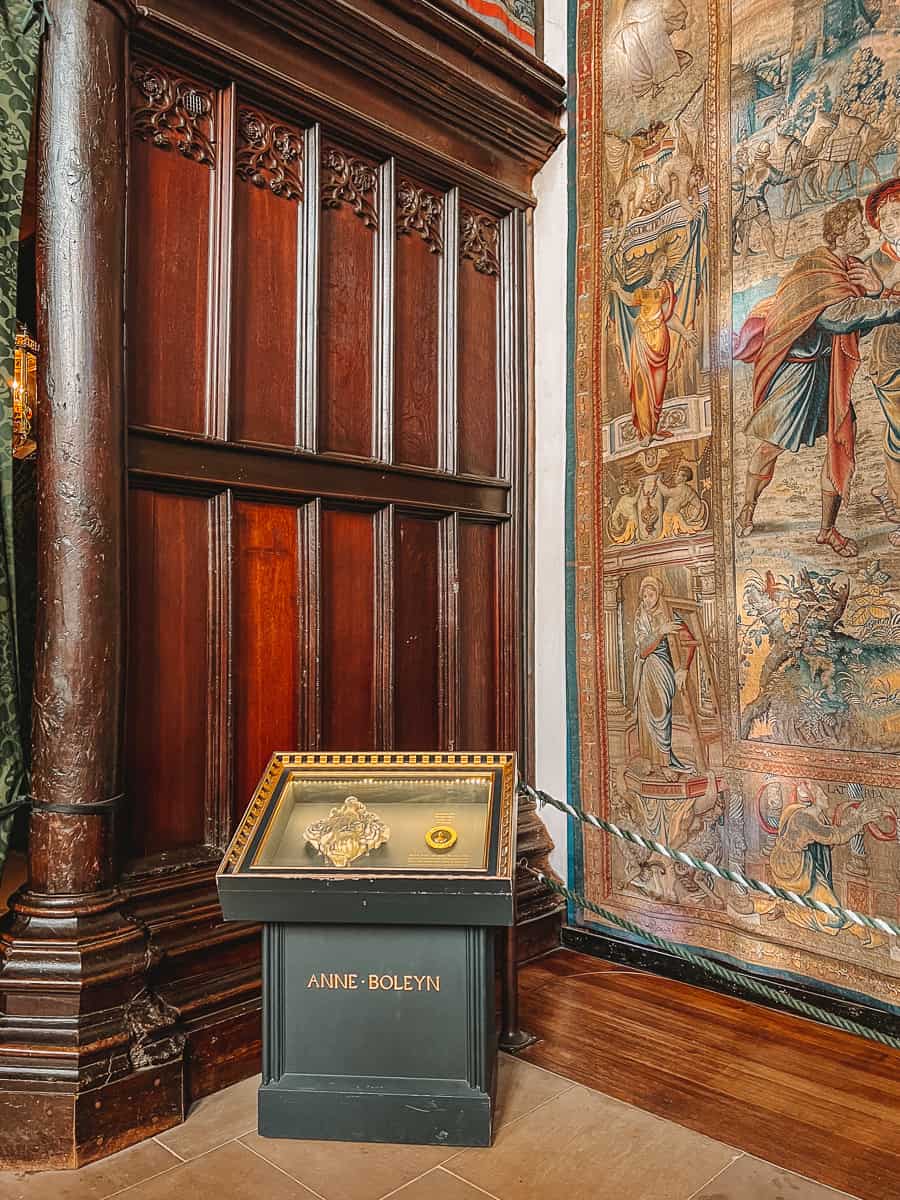
4. The Boleyn Coat of Arms, Falcon Crest & ‘AR’ on the ceiling of The Great Hall
While you’re exploring the Great Hall, don’t forget to look up! You’ll find grand oak beams adorned with carvings and lavish gold paint.
Although most of the hall was restored, there is still some original stonework on the ceiling including Anne Boleyn’s falcon.
You’ll find the initials ‘A R’ meaning Anne Regina (Queen Anne), Her Coat of Arms, and her Royal Badge.
It is thought that these symbols were too high up to care about removing them so there they remain!
This one is another hard one to locate but the Anne Boleyn display case has an example of the Boleyn falcon carved onto stone inside.

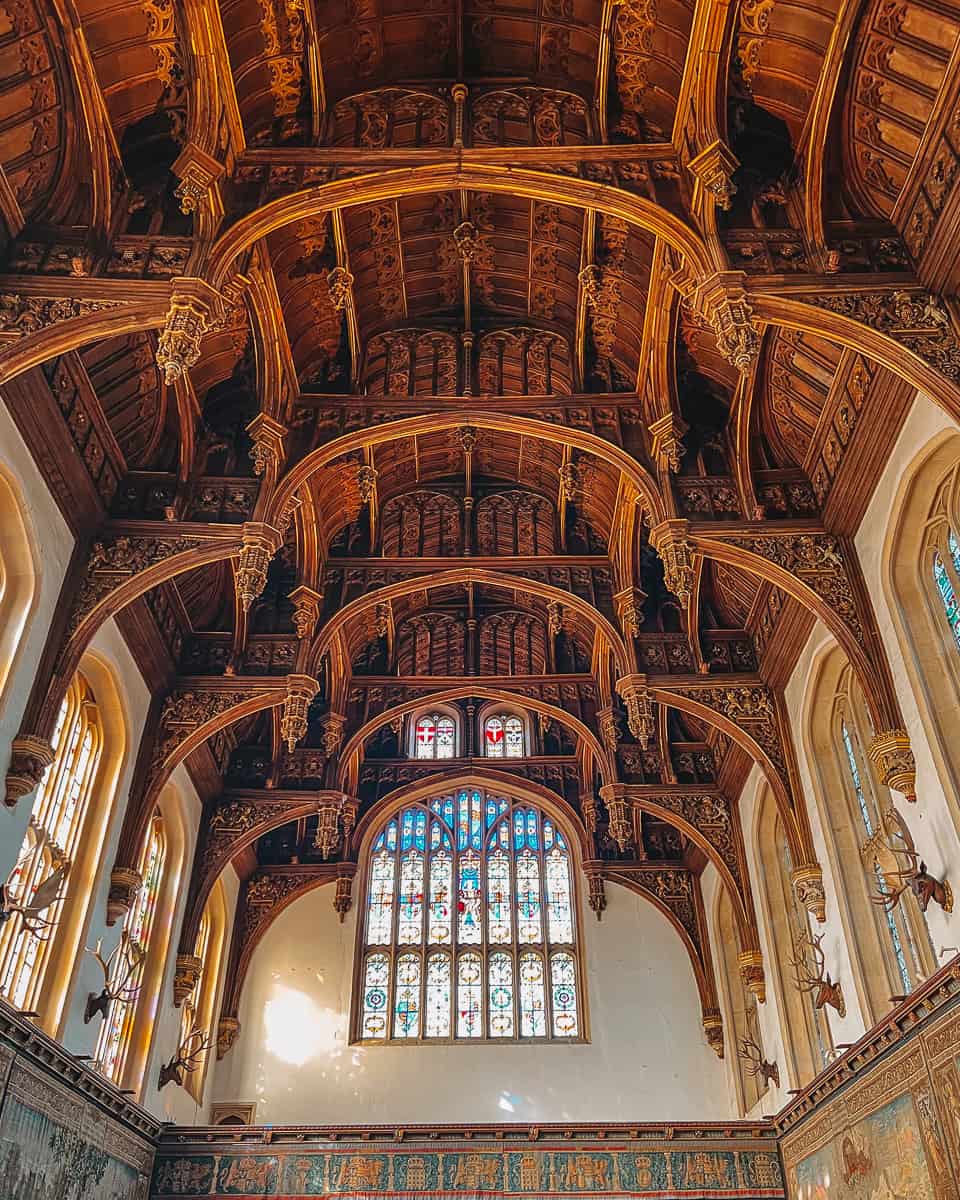
5. The Anne Boleyn stained glass window
When the Victorians restored the Great Hall, they decided to create a stained glass window for each of Henry VIII’s wives.
They were very symbolic about this and decided to place the windows of Henry VIII’s favourite wives where the sun rose in the morning and placed the windows of his least favourite wives where the sunset.
You’ll find Anne Boleyn’s stained glass window at Hampton Court where the sun rises. It has her family tree on there with all her relative’s coats of arms present.
You’ll also notice ‘A R’ on the window meaning Anne Regina (or Queen Anne) and the Boleyn Falcon crest.
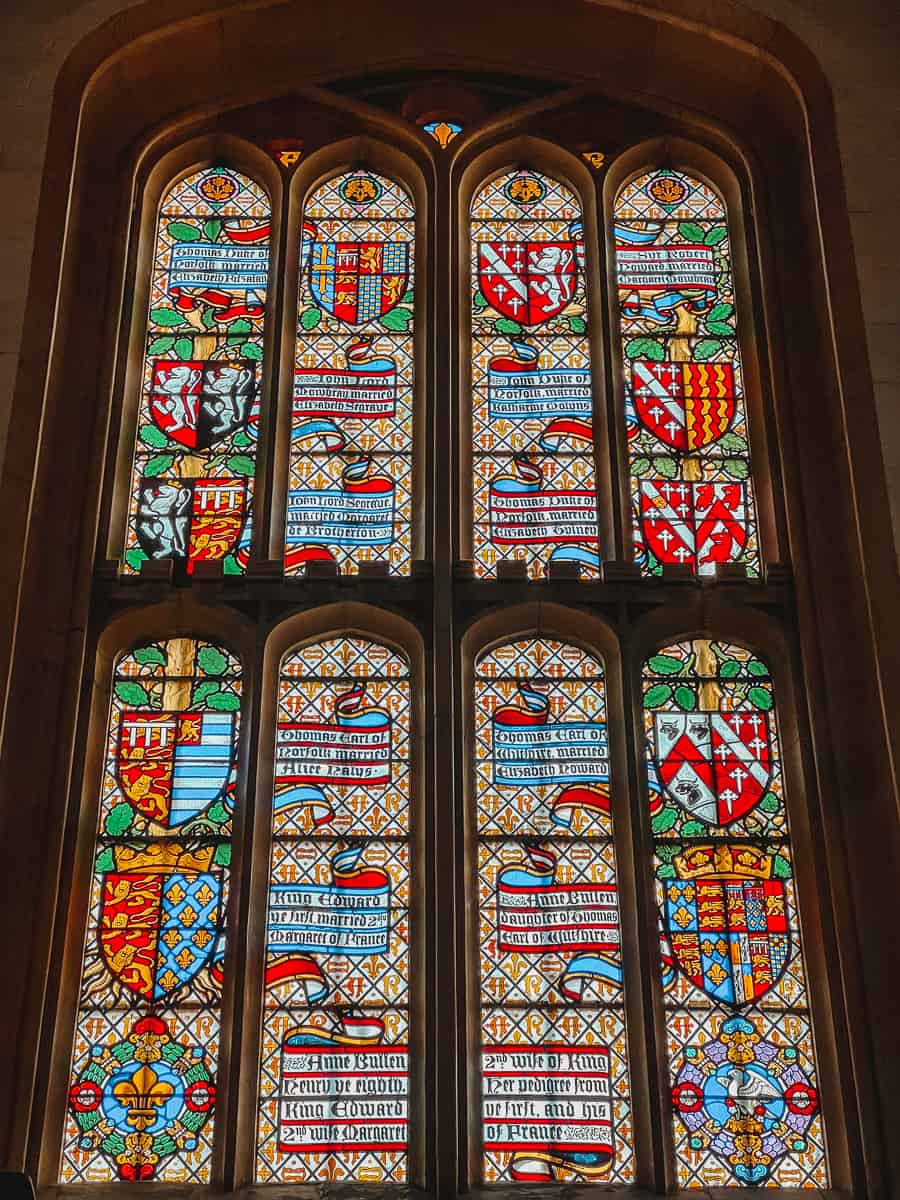
6. Anne Boleyn’s Portrait
After Anne’s death, many portraits of her were destroyed. So, there aren’t many images made of Anne Boleyn that were made when she was alive.
This meant that Elizabeth I couldn’t remember her mother as she was executed when Elizabeth was just three years old.
To talk of Anne was forbidden during Henry VIII’s reign but after Elizabeth became queen she tried to repair her mother’s reputation.
Portraits of Anne were then uncovered or painted during the Elizabethan era in support of their new queen! You’ll see one such portrait hanging up in the gallery of Henry VIII’s apartments.
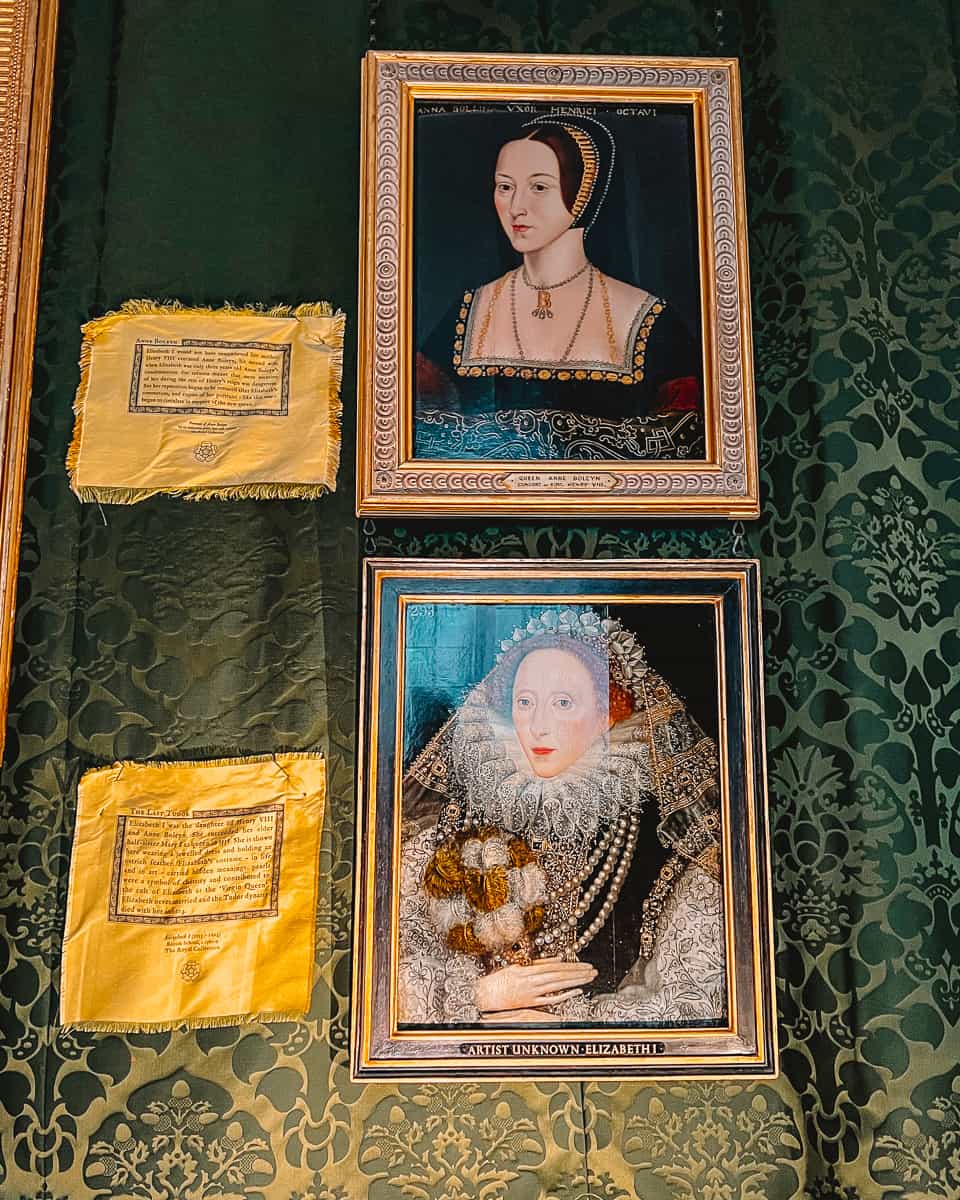
7. Falcon badge of Anne Boleyn
An exciting discovery of a rare oak mount of the royal badge of Anne Boleyn has recently been found.
Anne was granted her royal badge in 1532 just before she married King Henry VIII. It is a badge packed with symbolism as it’s the signature Boleyn falcon wearing an Imperial Crown.
This is important as it signifies Henry’s claims to imperial power following his rejection of the authority of the Roman Catholic Church and the Pope.
The bird stands on a tree stump that has red and white roses growing around it symbolising fertility.
Many of these symbols would have been seen at Anne’s coronation and the image became synonymous with her.
It is believed that this rare heraldic badge was part of the hammerbeam ceiling of the Great Hall during the 16th-century. It was removed shortly after her execution.
It was recently bought at an antique dealership in Devon. But, it is now on long-term loan to Hampton Court Palace and will be put on display.

Anne’s Legacy
Despite Henry’s attempts to wipe Queen ‘Anne of the Thousand Days’ from the history books, she is still wildly discussed today.
Love her or hate her, she is a very controversial figure that people get very passionate about. But, a lot of what we know about her isn’t always fact.
We have very little to go on as most of Anne’s letters, portraits, and possessions were destroyed after her execution. We don’t even know the exact date when she was born!
There are misconceptions about her having six fingers, practicing witchcraft, and administering poison. However, a lot of her story is told through secondhand accounts after her death.
A lot of these theories are portrayed in books, TV shows like ‘The Tudors’, and films like ‘The Other Boleyn Girl’.
What we do know is one of her greatest legacies was giving birth to her daughter Queen Elizabeth I. One of England’s greatest monarchs who brought about a ‘Golden Age’.
She never married, gaining her the moniker of the ‘Virgin Queen’. Her spirit and speech in defeating the Spanish Armada are renowned and she was immortalised as ‘Gloriana’.
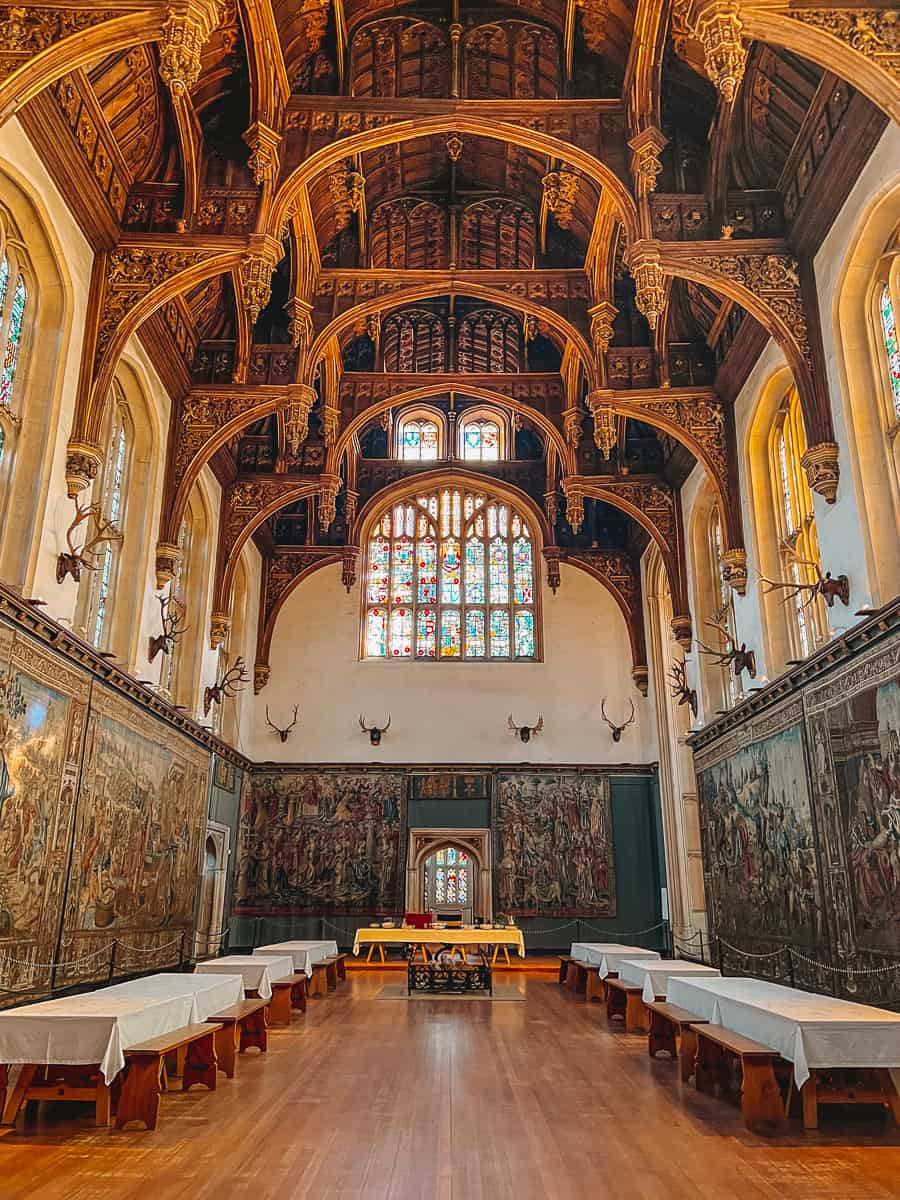
Other things to see in Henry VIII’s Apartments
There is a lot more to see in Henry VIII’s apartments aside from Anne Boleyn’s symbols.
Henry VIII famously had six wives during his reign and there are pieces of all of them to be found in this part of the palace.
Look out for the following as you wander around;
- Great Hall – this room was the most striking at the palace in my opinion. Look out for the detailed hammerbeam rooftop and the eavesdroppers to remind you to watch your tongue!
- Great Watching Chamber – the Yeoman of the Guard stood here to allow access to important people to see the king. It’s decorated with Wolsey’s tapestries and there is a stained glass window of him here. If you look at the elaborate ceiling you’ll find more symbols like Jane Seymour’s Phoenix rising from a flaming tower.

- Haunted Gallery – you can follow in Henry VIII’s footsteps from the Great Hall to the Chapel. It is currently lined with portraits but this is where Catherine Howard was arrested! Legend has it she broke free here and ran towards Henry to beg him for mercy. It is said she still haunts this room.
- Chapel Royal & Henry’s Crown – One of my favourite rooms was the Chapel Royal. The Tudor vaulted ceiling is painted in a rich blue with gold stars like the night sky! You’ll stand by the Royal Pew and you can see a recreation of Henry’s coronation crown.
- Henry VIIIs kitchens & wine cellar – Henry had the largest Tudor kitchens in England that would produce 800 meals a day. You’ll find cauldrons, an open fire, and all sorts of recipes and menus!
- Anne Boleyn at the Gift shop – Did you know that you can buy Anne Boleyn’s famous pearl ‘B’ necklace at the Hampton Court gift shop? It can be personalised with your own initial!


Later Hampton Court Palace’s history
After the Tudor dynasty, the Stuarts still decided to reside here. Charles I would find this to be his home and prison before his execution.
Luckily, unlike many royal households across England, Hampton Court remained unscathed during Cromwell’s brief rule.
After the Restoration, Charles II and James II decided to reside elsewhere. Queen Anne made some significant changes to the palace and oversaw the construction of the state apartments.
During the Hanoverian period, King George II would be the last monarch to reside at Hampton Court Palace. However, the Great Hall was restored during the reign of Queen Victoria.
Today, Hampton Court Palace is no longer a Royal Household but a major tourist attraction in London that you can visit. It’s part of Historic Royal Houses.
So, aside from Henry VIII’s apartments, you have amazing Georgian rooms, galleries, gardens, and an entire park to explore!

Things to do at Hampton Court Palace
There were a whole wealth of royals who lived at Hampton Court and left a legacy behind.
The next part of your tour will take you to the Georgian wing and galleries. But, my personal favourite area was William III’s apartments.
The King’s Staircase took my breath away as the walls are covered in a painted mural depicting the ‘Victory of Alexander over the Caesars’.
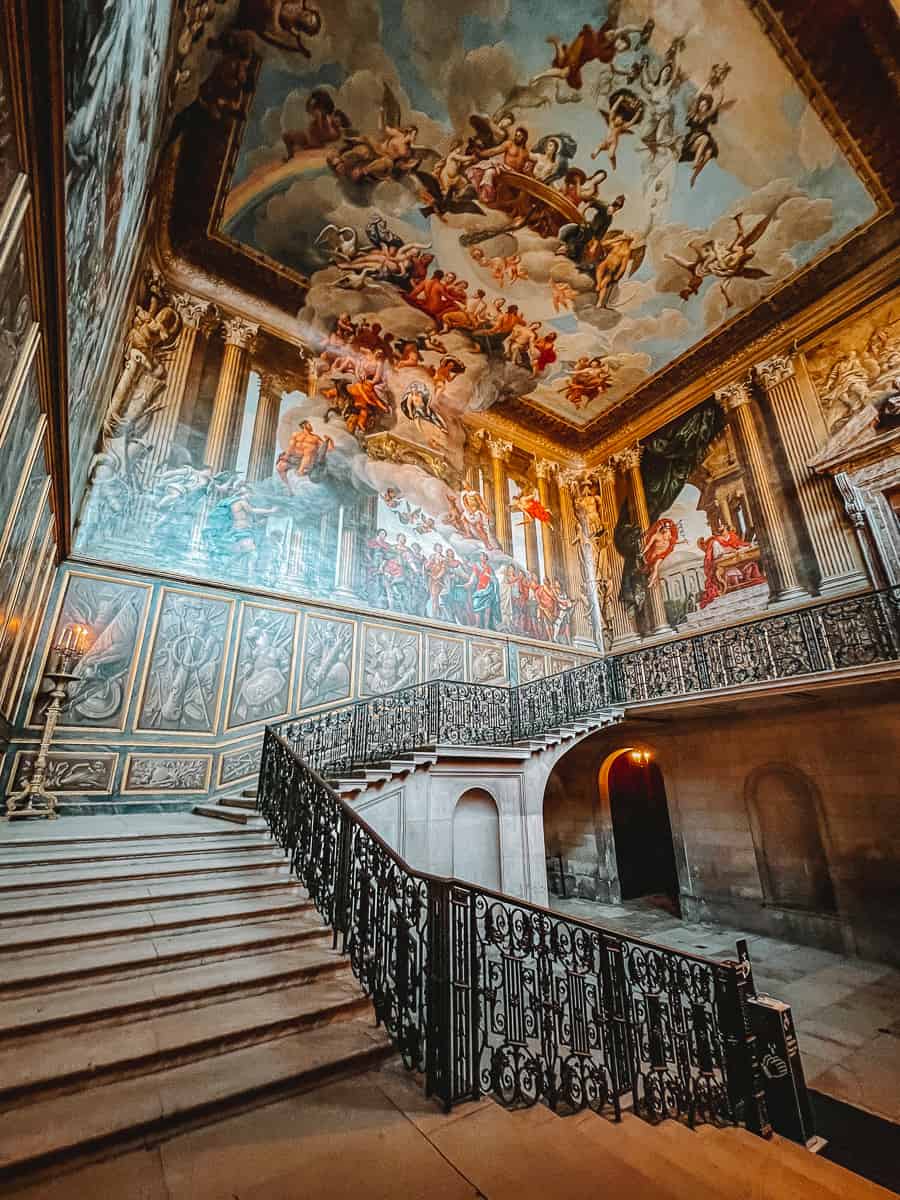
The staterooms are even more lavish and you’ll find a guard chamber decorated in weapons, a presence chamber, and a four-poster bedroom.
The bedroom had a gorgeous painted ceiling of the night sky with the Goddess Diana sitting on the moon.
Don’t forget to check out their chocolate kitchen, the Great Vine, and the gardens here. There are lots of walks you can take outside if the weather is sunny!
Recently, Bridgerton was filmed here and so you’ll enjoy chasing filming locations! You’ll recognise places in the Fountain Court, Master Carpenter’s Court, Clock Court, the King’s Staircase, and the elaborately manicured gardens.


How to visit Hampton Court Palace in London
Hampton Court can be found in East Molesey which is in Surrey just on the outskirts of Central London.
It’s easy to drive here on the A308 road just off the M25 orbital, take either exit 10 or 12 and follow the brown tourist signs.
If you are driving, be aware that Hampton Court is located in a Low Emission Zone and driving charges may apply.
If you’re in London or nearby, it’s easiest to get the train. There are no London Underground services that run here.
Hampton Court railway station is a five-minute walk away from the palace. Regular services run from London Waterloo and are in zone 6.
The address is Hampton Court Palace, East Molesey, Surrey, KT8 9AU. Click here for a Google Pin to start planning your journey!

Hampton Court Palace prices and opening times
Adult tickets for Hampton Court Palace cost £26.10 and £28.80 if you choose to donate to the Historic Royal Houses foundation.
Children’s tickets are £13 and £14.30 with a donation. It is recommended to book your tickets online to guarantee entry and get the best price.
Members of Historic Royal Houses get in for free and also have the option of free parking.
Opening times vary throughout the year but typically Hampton Court opens at 10 am. The closing time is 5.30 in summer and 4.30 in winter.
Click here to check the latest opening times and to book your ticket

Hampton Court palace parking
There is limited parking available at Hampton Court Palace and this is a pay and display car park that is not included in your ticket.
Parking is £1.60 an hour. Members of the Historic Royal Houses get to park for free as part of their membership.
If you cannot find space, there is parking found just outside Hampton Court Green but it’s still £1.50 an hour.


Looking for more Anne Boleyn attractions in the UK?
If you wanted to find more Tudor attractions associated with Anne Boleyn, there are plenty to choose from.
Anne Boleyn was born at Bickling Hall in Norfolk and her headless ghost apparently still haunts the halls!
Hever Castle in Sussex was where Anne spent most of her early years and there is an Anne Boleyn exhibit here with her portrait.
You’ll also find a gift from King Henry VIII to Anne Boleyn of a Choir Screen at King’s College Chapel in Cambridge. Anne and Henry’s initials were carved into the panels too.
Westminster Abbey was where Anne was crowned in her coronation along with many other English monarchs.

I would highly recommend visiting the Tower of London. This is where Anne was brought through the Traitor’s Gate and held prisoner before she was executed.
You can visit Anne Boleyn’s grave at Chapel Royal St Peter ad Vincula and you can find a small memorial to her there.
You also have Tudor attractions like;
- Shakespeare’s Globe
- Shakespeare’s birthplace
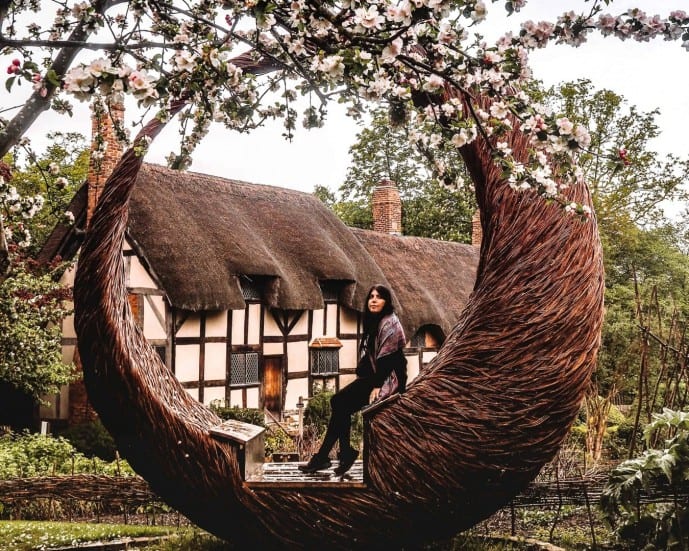
Read more of my London articles
Why you must visit the Hardy Tree
How to visit Word on the Water – London’s Bookbarge
Jurassic World Exhibition in London review
How to find Platform 9 3/4 at King’s Cross Station
How to visit 221b Baker Street
Why you must visit God’s Own Junkyard
The secret St Dunstan in the East garden
Free things to do in London Bridge
How to cross the Beatle’s Abbey Road
A Harry Potter guide for Leadenhall Market
Is Goodwin’s Court the real Knockturn Alley?
Visiting Hogwarts in the Snow at Harry Potter Studios
How to visit Highgate Cemetery in London
Dark Arts at Harry Potter Studios London
How to visit the Hogwarts Divination Stairwell at St Paul’s Cathedral
Why you must visit Daunt Books Marylebone
The best London Christmas lights and displays to visit
A complete Mr. Fogg’s Tavern review
Save the Anne Boleyn symbols at Hampton Court palace for later!

